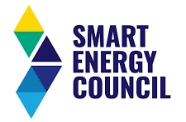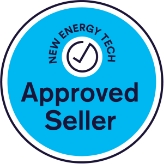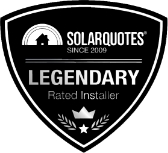
Huawei inverters are the new kid on the solar block. I first published this Huawei inverter review in May 2018. It gained a bit of attention and some online criticism saying it was not accurate. However, Huawei approached me about this review, and apart from some cheeky comments I made, they graciously agreed with the content and said they were working on improvements.
Since then I’ve just visited Huawei’s factory in Suzhou, and their R&D centre in Shanghai. Trent, Nicole and I met with the Stephen Zhou, the general manager for residential inverters and we discussed the points in this blog and the road map for Huawei’s inverters. I’ve updated some sections as Huawei have already made some improvements to their inverter since I first published the blog. I’ve also posted a Huawei optimiser YouTube Video in December 2020.
 Who is Huawei anyway?
Who is Huawei anyway?
Huawei’s Headquarters are in Cantonese-speaking China, and in Cantonese, it is pronounced “Wah way”. However, when translating to English, the company chose to write it in pinyin with the Mandarin pronunciation “Hwa way”, so I think we should run with that.
Huawei is pronounced “Hwa way”
The name literally means “Chinese Achievement”. And achieve they have:
- In 2017, Huawei overtook Apple to become the second largest mobile phone manufacturer in the world. (The largest is Samsung.)
- They supply the 4G network for Vodafone, Optus and TPG in Australia.
- They boast a presence in more than 170 countries. There are only 195 countries in the world.
- Huawei employs 180 000 people globally. Apple has 123 000 and Samsung have 275 000.
- Eighty thousand of their employees work in Research and Development. They have 15 Research and Development Institutes.
- Huawei has 800 employees in Australia.
I could go on and on but… “whatever”. That’s in telecommunications and other industries. What do they know about solar? In 2015, 2016 and 2017, and 2018 Huawei shipped more solar inverters worldwide than any other manufacturer. (Measured by total inverter output capacity). Drop the mic Huawei!
The apparent game changer
The reason this new Huawei Solar SUN-20005KTL is creating so much hype is that at first glance at the Huawei inverter specification (see it here) does everything we ever wanted an inverter to do.
- It’s a “battery ready” inverter at an affordable price.
- It can connect to the reputable LG Chem battery – like SolarEdge.
- We can install it without optimisers for affordability as a standard string inverter – like Fronius.
- We can selectively install optimisers on shaded panels only – like Tigo
- Or, we can optimise all panels – like SolarEdge.
- It’s got an inbuilt IV curve tester – like nothing before!
But does Huawei’s inverter actually deliver on what they promised? Read on.
The Huawei Solar inverter reviewed
Optimisation
December 2020 update. Watch the below video to see my latest take on the Huawei inverter – including the optimiser.
There are three things I like about the Huawei Solar optimiser solution. Its electrical simplicity, its selective deployment and its flexible string voltage.
Electrical simplicity
The job of an optimiser is to adjust the panel voltage depending on the sunshine and shading so that the current in each panel is equal. This allows us to achieve maximum power from the system. In the case of SolarEdge, the voltage continuously decreases and increases, or “boosts and bucks”. The Huawei Solar optimiser only bucks the voltage of poorer performing panels in order to increase to the current of the higher performing panels. The Huawei inverter then boosts the voltage as appropriate. In theory, this means simplicity and reliability on the roof.
Selective deployment
A term that I borrowed from Tigo, “selective deployment”, allows us to save on the cost by only installing optimisers on the panels that are going to be affected by shade. The optimisers cost around $80 each. So if you had ten panels that were not affected by shade, you could easily leave ten optimisers off and save $800.
Optimiser Monitoring
Updated December 2020 Huawei have updated their inverter so integrate what was previously called their “safety box”. The most important feature of the new integration means is optimiser monitoring. This is mostly important so you can easily identify if you have a failed optimiser. But it also allows you to see how each panel is performing. Watch my YouTube video about to see my opinion about the value of panel level monitoring.
Flexible string voltage
The Huawei Solar optimiser solution has another significant advantage over Solaredge. The SolarEdge HD wave inverter works on a fixed voltage of 380V. This means that the string of panels must add up to 380 volts in every situation. However, each optimiser has a boost voltage limit, which is usually 60 volts. In some cases, this means the SolarEdge optimiser is not capable of boosting high enough to compensate the current of the lower performing panels. This results in the lower performing panel actually dragging down the other panels in that string.
The Huawei inverter, by contrast, has a variable input voltage and can work as low as 90 volts. The optimisers only work if there is shade or if panels are installed in multiple orientations. This, in theory, will result in better reliability, and we will avoid the losses that can happen with SolarEdge blocking.
IV Curve Diagnosis
Last year I went to a solar trade show in Munich. The real WOW factor for nerds visiting the Huawei Solar stand was that their upcoming 5kW inverter had an inbuilt IV Curve tester. An IV tester can accurately find a degradation fault within a panel. To put this in perspective, about five years ago, I geeked and bought an IV Curve tester for fun. It cost me about $10 000, and it was a pain in the neck to set up and use.
Now the Huawei SUN-20005KTL can apparently generate an IV curve with just “one click”? Geek me out!
In the previous version of this blog, I complained bitterly because Huawei told me the IV curve function was now not going to be available for residential inverters. As I type this update, I’m in China visiting Huawei’s factory. I just met with Stephan Zhou, Huawei’s general manager for residential inverters. I explained to him why having the IV curve function in residential inverters would be awesome. So, Stephen said he would make it happen – and it will be available by the time I get back home! For free!
I can’t wait to play with it, and I’ll update here once I have.
(For commercial inverters, you have to pay a small subscription to have the IV function available.)
Huawei Inverter Monitoring Platform
In the earlier version of this blog, I complained about Huawei’s monitoring platform. Huawei of all companies should have an online monitoring platform sorted. And now they have. It’s now a platform worthy of the tech giant’s great name. The platform really shines when you have the safety box (Henry) connected to the inverter and Huawei optimisers on every panel. The level of historical data and ease of use of the platform is impressive. It has an impressive user interface and displays all of the historical data clearly and simply. It leaves the glitchy lacklustre SolarEdge monitoring platform for dead. Having in-depth panel and inverter information on the one platform is also more elegant than using both Tigo and Fronius monitoring.
The Huawei inverter specifications
Voltage restrictions
At the time of writing, the Huawei 5kW inverter is restricted to 500 volts input if you connect it to the current LG battery. Huawei advises me that changes are coming and the battery will soon be able to handle 600 volts. So if you are choosing the Huawei inverter to be “battery ready” then Huawei should have solved the problem by the time you go to purchase a battery.
But forget about installing the Huawei with the LG battery solution as it stands today – because this 500-volt restriction will mean significant power restrictions.
Power restrictions
When we install a solar system without a battery, we are limited by the 33% oversize rule (6.6kW of panels on a 5kW inverter). This regulation was introduced to prevent us from claiming the STC’s on panels will rarely be able to perform to their maximum potential (e.g., installing 10kW of panels on a 5kW inverter).
However, when we install a solar system with a battery, we can legally install as many panels as the inverter manufacturer allows. Installing 10kW of panels on a 5kW inverter with a dc coupled battery is not uncommon. This is because you can use any excess power (that would have otherwise been clipped at 5kW by the inverter) to charge your battery. It’s a financial no-brainer to install more than 6.6kW of panels on your 5kW Huawei inverter.
So how many panels does Huawei currently allow you to install on their hybrid inverter/LG battery? Bugger all. Because of the 500 volt limitation of the LG battery, we have to reduce the number of panels per string. So we’ll choose a higher wattage panel for best results. For example:
- 20 x 330W QCell panels on the Huawei inverter + LG battery = 6.6 kW. That’s undersized for a battery system.
Huawei advise me they are sorting out this 500-volt limitation, but when that happens, the maximum power oversizing they will still be 7.5kW of panels on their 5kW inverter. 7.5kW hours of solar may be enough for people who don’t use a lot of power, But If your home uses a fair bit of power during the day, 7.5kW of solar may not be enough to fully charge an LG 10kWh battery every day – particularly on rainy days.
Current restrictions
The Huawei inverter has a tiny 11 amp input current. That’s fine if you have a spacious roofline and can put panels wherever you like. But if your roofline is a little more complicated, you won’t be able to parallel strings with standard panels because the current will be over the 11 amp input limit. Huawei tells me they are looking into increasing the current limitation for their next version of their single-phase inverters If they do, that will make the inverter a much more interesting solution.
If however, your roof has significant shading, so you install optimisers on every panel, you won’t need to parallel your strings. (I only recommend optimisers for shaded panels: history has taught me that putting power electronics on the roof for no good reason is just opening yourself up to the possibility of failures.)
The Huawei inverter build
The Huawei inverter is a smart looking unit. When you look under the hood, it appears solid – I would suggest it appears better built than the new SMA.
This statement from the user manual is just a tad concerning.
Do not install the SUN2000L outdoors in salt areas. A salt area refers to the region within 500 meters from the coast or prone to sea breeze.
Huawei explained that this is really just a reflection of the standards they were required to test to. In June 2019, Huawei was performing further accelerated testing to a higher standard so they can remove this ridiculous 500m restriction. Currently, Huawei will permit you to install closer to the beach on a case by case basis.
Sea breeze or not, the Huawei inverter specifications claim the inverter has “natural cooling”. I’ve shown in other blogs, that when SMA and ABB say “natural cooling” they are just kidding. The SMA and ABB inverters have internal fans. But it was nice to see that when Huawei says “natural cooling” they mean “no fan”. An internal fan in an inverter is considered a weak spot – another moving part. But if you don’t install a fan, the concern is high temperatures will shorten the life of the capacitors. However, Huawei claims their secret to cooling the inverter is in component placement and how they use the entire case of the inverter as an effective heat sink.
This is why the Huawei inverter specification states:
“Burn Warning. Do not touch a running SUN2000L because the shell is hot when the SUN2000L is running”.
Well, that’s a tad concerning – or is it?
Huawei smoke test

I asked Huawei about the burn warning while in their factory in China. They said at 45 degrees ambient temperature, the front of the inverter will get up to 60 and the back will get up to 70. I got out my frypan and heated it to 70 degrees. At 70 degrees, you’d have to deliberately hold your hand there to get burnt. Fair to say that Huawei is being a bit over-cautious with their warning. But don’t be surprised on a hot day if the inverter is hot to touch. On the positive side, natural cooling means you don’t have the problem of fan noise. Noisy fans can be an issue for Fronius inverters when instaled, for example, in a home office.
Conclusion
Huawei is an impressive company and has lived up to its name “Chinese Achievement” by not only gaining a large share of the telecommunication industry but by dominating the solar inverter market internationally.
If you’re looking for a quality inverter for a simple roof with shading on a few panels, then the Huawei SUN-20005KTL inverter is a good option – but Fronius and Tigo will give more flexibility. If you have heavy shading and need optimisers on every panel, Huawei becomes more interesting. While the safety box is an ugly addition, it is an affordable solution. The safety box gives you a pretty powerful all-in-one platform for monitoring individual panels. It enables rapid shutdown, and now it even offers IV curve testing! But because I only recommend we install optimisers for shaded panels, full deployment is fairly rare.
However, if you want a hybrid inverter or your roof is more complicated, then Huawei has significant limitations (unless you purchase optimisers). When installed with a battery, the system won’t run in a blackout. The current pairing with the LG battery is useless because the battery voltage limitation restricts the number of solar panels you can install to charge the battery effectively. The inverter’s current limitations make it pretty inflexible. Huawei’s say their upcoming products will solve all of these issues. If they do, I’ve don’t doubt Huawei will have a secure place in the solar industry for years to come.













8 Responses
The Huawei inverter and optimizer are solid entries in the solar market, with notable improvements since their initial release. They offer selective deployment for shaded panels and flexible string voltage. The built-in IV Curve Diagnosis is a standout feature, providing accurate panel diagnostics. However, current limitations and voltage restrictions, particularly with battery integration, can be a drawback. Overall, Huawei inverters are reliable for simple installations with some shading, but other brands like Fronius may offer more flexibility for complex setups.
You make a good point Fred. Yet so many companies in Brisbane still sell batteries. It may be a good way to weed out a good company: ask them is it worth buying a battery.
Hello Mark I have just read with great interest your review of the Huawei Inverters. I’m quite a fan of their inverters particularly the commercial sized inverters, as we do a lot of installs around 100kW. However I’d like to mention something about the increasing use of battery solar. I spent a large part of my working life in the investment industry and always consider the ROI. It is often said that a battery system will take around 10 years to pay for itself. To my mind it’s more like 115 years. It appears that about the best FiT one can get in Qld is 16.1c per kWh from Energy Australia . So if I feed 10kW into batteries during the day I am foregoing $1.61 per day. At night time I draw down 8 kwH and save $1.848. Whoopee I have saved 23.8 cents! At an additional cost of around $10,000 dollars for my battery system I will save around $86.87 pa. $10,000 divided by $86.87 = 115.11 years payback period. Am I missing something? Regards Fred
Hi Austin, Thanks. No, I don’t generally deal with 50kW inverters. I have been meaning on doing a comparison on the 29.9kW inverter. It sounds interesting at face value.
Hi Mark, Great review on Huawei. We are considering them for commercial installations. is there any review for the 50kW commercial inverter yet? EW commonly use Fronius ECO range inverters for commercial, but always considering options .
Hi Sam, No everything I mentioned will only be in the next model.
Are the updates for the battery issue going to be backwards compatible ie can you upgrade the current unit or will it be a version 2?
If an inverter gets as hot as you wrote it here, I’m assuming it will reduce the inverter’s lifetime, and I think the inverter will derate and give less power at higher temperatures. Then I would prefer an inverter with active cooling. But also to my information Huawei claims natural cooling for the bigger inverters, but also have fans inside. For me Huawei inverter only look great on the data sheet, but I do not expect, that they run very well in their natural habitat, especially at higher ambient temperatures.